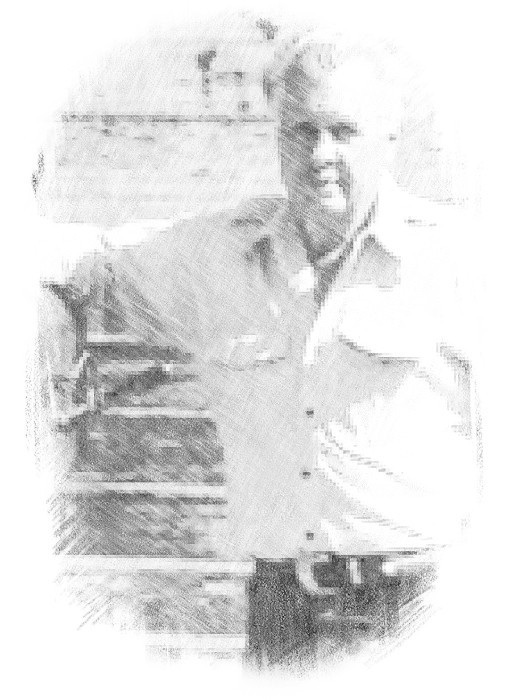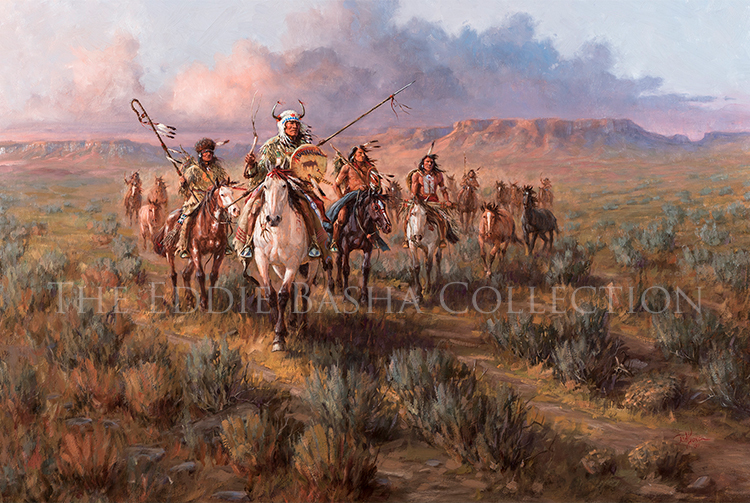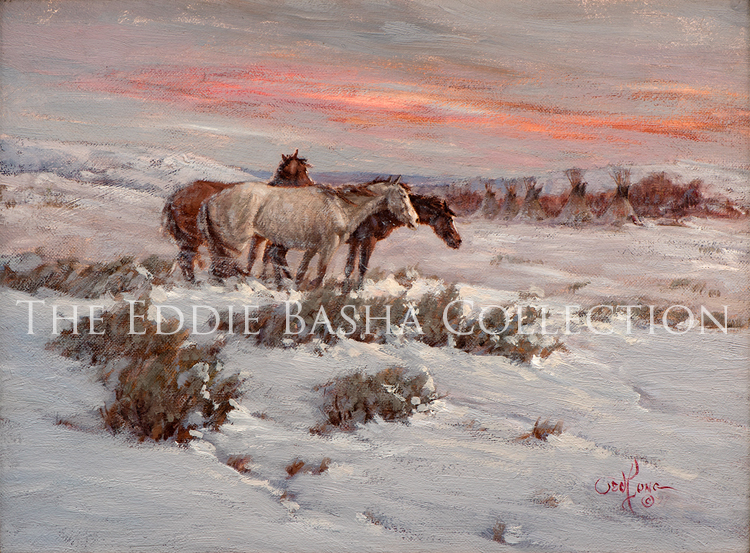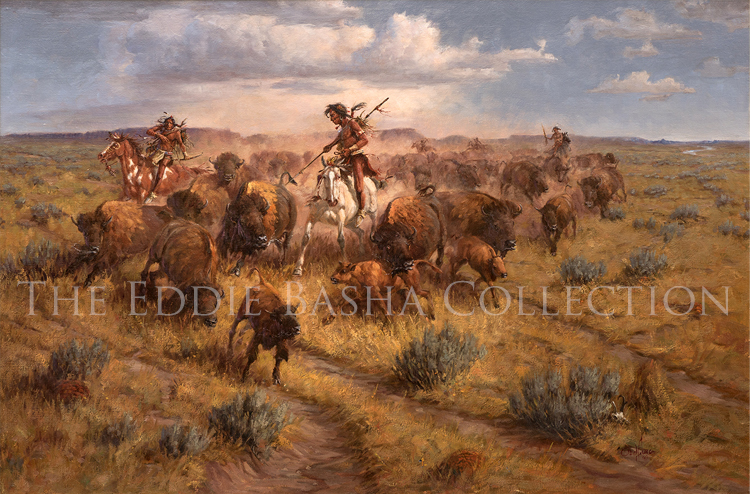
Ted Long
(1932-2007)
Ted Long, North Platte artist and sculptor, created the larger than life bronze sculpture, “Defenders of Liberty” that is at the entrance to the 20th Century Veterans Memorial.
Nationally recognized as one of the foremost western artists in the country, Long was best known at home in North Platte for the sculptures he created over the past few years for the 20th Century Veterans Memorial.
Long had often mused that an artist is never as quickly recognized in his hometown as he is across the nation and around the world. Yet the sculptures he created for the Veterans Memorial were, he said, the ones that evoked the most emotion within him and elicited the greatest feeling from him.
“We get to know each other very personally,” he had said of the figures as he worked in his ranch home studio to bring each of them to their life-like and larger-than-life status.
Long said that Defenders of Liberty, the sculpture that stands at the entrance to the Veterans Memorial, had been a sculpture he carried “in his head” for decades. He had often wondered when it would cease to be an image in his mind and become a reality in bronze. It became reality when he was commissioned to do the memorial entrance piece in 2003. The three battle-weary soldiers are from the Korean War period, the same war in which Long, an Army veteran, had fought. Long’s work that is currently in place at the 20th Century Veterans memorial, in addition to the Defenders of Liberty, are those of a Word War II pilot and a Vietnam era infantryman. Two larger than life eagles in flight are atop the memorial’s arched entrance along with a dove bearing an olive branch.
Even as Long’s cancer progressed, Long remained at his work as an artist. His primary focus had been on sculptures for the Veterans Memorial. Within days after undergoing surgery for the sarcoma in his leg, and as he underwent chemotherapy, Long returned to his studio to complete the sculpture that honors those who served the military in medical capacities. The piece, of a female figure rendering medical aid in combat, is done and has been cast in larger-than-life size bronze. The figure of a United States Marine, standing at parade rest, has been cast in its one-eighth-size bronze. The armature for the larger-then-life figure of the Marine is done.
Long helped found the Nebraskaland Days Governor’s Western and Wildlife Art Show. During the first years of the show, Long persuaded his professional artist friends from across the country to come to North Platte and show their work in a million-dollar exhibit. It was Long’s urging and support that brought many of the artists who currently exhibit their work during Nebraskaland Days to the show.
Long’s sculpture of Ponca Chief Standing Bear is in the rotunda of the Nebraska capitol building. Long became the first Nebraska artist to have a piece in the rotunda and Standing Bear became the first American Indian to be inducted into the state’s Hall of Fame.
Ted Long’s art brought him national acclaim and his work is in corporate and private collections, galleries and museums across the nation. But as much as being an artist had brought Long fame and accolades, he remained ever at-heart a rancher and a steward of the land. Long lived and worked the ranch northwest of North Platte where he was born and where he and his wife, Margaret, raised their four children: Michaelene, Tom, Patrick and Cathy.
When President Ronald Reagan visited the Long ranch in 1987, and when he shook hands with Long and Long’s father, Charles, Reagan said he was pleased to shake hands with “real working cowboys.” Long believed that his connection to the land, his respect for its seasons and the recognition of both its beauty and its demands, inspired his work. That bond with the land, he felt, gave his paintings their life and their vitality.
An artist does not live forever. Ted Long died Tuesday, March 6, 2007, at the age of 75. An artist’s work endures beyond him and for lifetimes yet to come. Ted Long’s work does and will continue to do that.
Source: The Meadowlark Gallery


